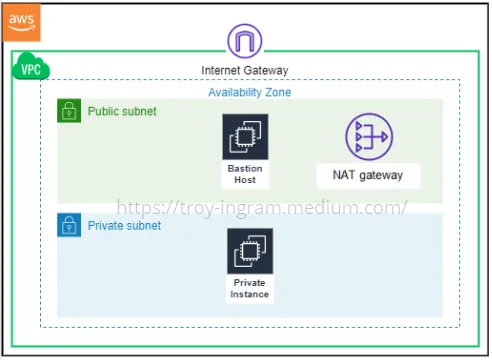What Is Databricks on AWS?
Databricks on AWS is a unified, cloud-based analytics platform. It is based on Apache Spark and provides a fully managed, scalable, and secure cloud infrastructure for big data processing, machine learning, and analytics. It's a combination of Databricks' advanced data processing and analytics capabilities with the robustness of AWS.
The platform is designed to eliminate the complexity that comes with big data analytics and artificial intelligence workloads. It provides a collaborative workspace where data scientists, data engineers, and business users can work together to extract insights from data. Databricks on AWS provides a fully managed Spark environment, interactive notebooks, integrated workflows, and a host of other features that make data analytics a breeze.
The goal of the Databricks on AWS solution is to simplify big data processing, accelerate machine learning initiatives, and enable collaborative analytics across your organization.
Why Run Databricks on AWS?
Robust Infrastructure
AWS provides a secure, scalable, and reliable environment that's perfect for running your Databricks workloads. With data centers globally, AWS offers high availability and fault tolerance, ensuring your applications are always up and running.
The AWS infrastructure is designed with security in mind. It provides several layers of operational and physical security to ensure your data is protected. This robust security framework allows you to focus on your data without worrying about the safety of your infrastructure.
In addition to security, the AWS infrastructure is known for its scalability. Whether you're dealing with megabytes or petabytes of data, AWS can scale up or down based on your needs. This scalability ensures that you always have the resources you need to process your data.
Seamless Integration with AWS Services
Another advantage of running Databricks on AWS is the seamless integration with other AWS services. Whether you're looking to store data in Amazon S3, stream data with Amazon Kinesis, or analyze data with Amazon Redshift, Databricks on AWS makes it easy to leverage these services.
This seamless integration not only simplifies your data workflows but also enhances your capabilities. For instance, you can use Amazon S3 for data storage, Amazon EMR for data processing, and Amazon Redshift for data warehousing. Databricks on AWS allows you to utilize these services without having to worry about the complexities of integration.
Moreover, this integration extends to AWS security and management services. You can leverage AWS Identity and Access Management (IAM) for access control, AWS CloudTrail for governance, compliance, and auditing, and AWS CloudWatch for monitoring and logging.
Cost-Effective Scalability
Running Databricks on AWS also offers cost-effective scalability. With AWS, you only pay for what you use, and you have the flexibility to scale up or down based on your needs. This pricing model eliminates the need for upfront investment in infrastructure and reduces the total cost of ownership.
Furthermore, Databricks on AWS takes advantage of AWS's auto-scaling capabilities. This means that your Databricks clusters can automatically scale up or down based on workload, ensuring you only use and pay for the resources you need. This dynamic scalability not only saves costs but also ensures optimal performance for your workloads.
Running Databricks on AWS: A Practical Guide
Setting Up Your AWS Environment for Databricks
The first step towards running Databricks on AWS is setting up your AWS environment. This involves creating an AWS account, setting up your billing preferences, and creating an IAM (Identity and Access Management) user.
To create an AWS account, visit the AWS homepage and click on 'Create a Free Account'. Follow the prompts to enter your email address, password, and account name. Once you have created your account, you will need to set up your billing preferences. This involves entering your credit card information and choosing a payment method.
Next, you will need to create an IAM user. This user will have the necessary permissions to create and manage AWS resources. To create an IAM user, navigate to the IAM dashboard and click on 'Users'. Then click on 'Add User' and enter a username. Select 'Programmatic access' as the access type and click 'Next'.
Deploying Databricks on AWS
Now, we're ready to create the Databricks workspace. Here are the steps:
Step 1: Setting Up Your Workspace
Sign in to your account console and click the Workspaces tile. Click the Create workspace dropdown and select Quickstart (recommended). This will take you to the setup page.
On the setup page, you need to enter a Workspace name and the AWS region where you want to host your Databricks workspace. Select the region closest to your primary work location.
Click Start quickstart. This will take you to the AWS Quick Start form, which opens in a new tab.
Step 2: Completing the AWS Quick Start Form
On the Quick Start form, enter your Databricks account password (not your AWS password). Also, select the option I acknowledge that AWS CloudFormation might create IAM resources with custom names.
All other fields are pre populated. You can rename these resources, but make sure to adhere to the strict AWS naming rules for each resource.
Click Create stack to start the creation of your workspace.
Step 3: Monitoring the Workspace Creation
You will be redirected to the databricks-workspace-stack page where you can monitor the workspace creation.
While the workspace is being created, the databricks-workspace-stack status will show as CREATE_IN_PROGRESS. Once the workspace creation is complete, the status will show as CREATE_COMPLETE.
In case of any issues, the workspace creation will automatically roll back. You can check the Events tab for more details.
Step 4: Accessing Your New Workspace
Once the databricks-workspace-stack status shows as CREATE_COMPLETE, go back to the Workspaces dashboard in the Databricks account console to view your new workspace.
You will also receive an email from Databricks with a link to your new workspace. Click the link to launch your workspace.
Select your primary use case and click Finish.
Using Databricks for Data Analysis
Now that you've set up and deployed Databricks, you can start using it for data analysis. Databricks offers several powerful features like interactive notebooks, a collaborative workspace, and built-in data visualization tools.
Interactive notebooks are one of the primary tools you'll use for data analysis in Databricks. They allow you to write code, run it, and see the results all in the same place. You can use a variety of languages in these notebooks, including Python, Scala, SQL, and R.
The collaborative workspace in Databricks allows teams to work together on data analysis projects. You can share notebooks, schedule jobs, and track progress all in one place. This makes it easy to collaborate and keep everyone on the same page.
Finally, the built-in data visualization tools in Databricks make it easy to understand your data. You can create charts, graphs, and other visualizations directly in your notebooks. This helps you see patterns and trends in your data that might not be apparent in raw numbers.
Optimizing Costs and Performance
Databricks on AWS can become a substantial investment. You need to be aware of Databricks pricing options, and monitoring your usage is crucial to controlling your costs. AWS provides a variety of tools to help you monitor your usage, including the AWS Cost Explorer and the AWS Budgets dashboard. By regularly monitoring your usage, you can identify trends, spot inefficiencies, and make informed decisions about your resource allocation.
Optimizing your queries can significantly improve your performance. Databricks provides a variety of features to help you optimize your queries, including query optimization, query insights, and query history.
Choosing the right instance types can also have a significant impact on your performance. AWS offers a wide range of instance types to choose from, each with its own unique combination of CPU, memory, storage, and networking capacity.
Monitoring and Logging
Finally, it's crucial to set up proper monitoring and logging for your Databricks on AWS deployment. AWS offers a range of services for this, including CloudWatch for monitoring your resources and applications, and CloudTrail for keeping track of user activity and API usage.
CloudWatch allows you to collect and track metrics, set alarms, and automatically react to changes in your AWS resources. You can use CloudWatch to gain system-wide visibility into resource utilization, application performance, and operational health.
CloudTrail, on the other hand, enables governance, compliance, operational auditing, and risk auditing of your AWS account. With CloudTrail, you can log, continuously monitor, and retain account activity related to actions across your AWS infrastructure.
Conclusion
In conclusion, running Databricks on AWS can offer significant benefits for professionals dealing with data processing and analytics. From setting up your AWS environment to monitoring and logging, each step is essential to harness the power of Databricks on AWS. By following this comprehensive guide, you can streamline your data processing, enhance your analytics capabilities, and drive your business forward.

